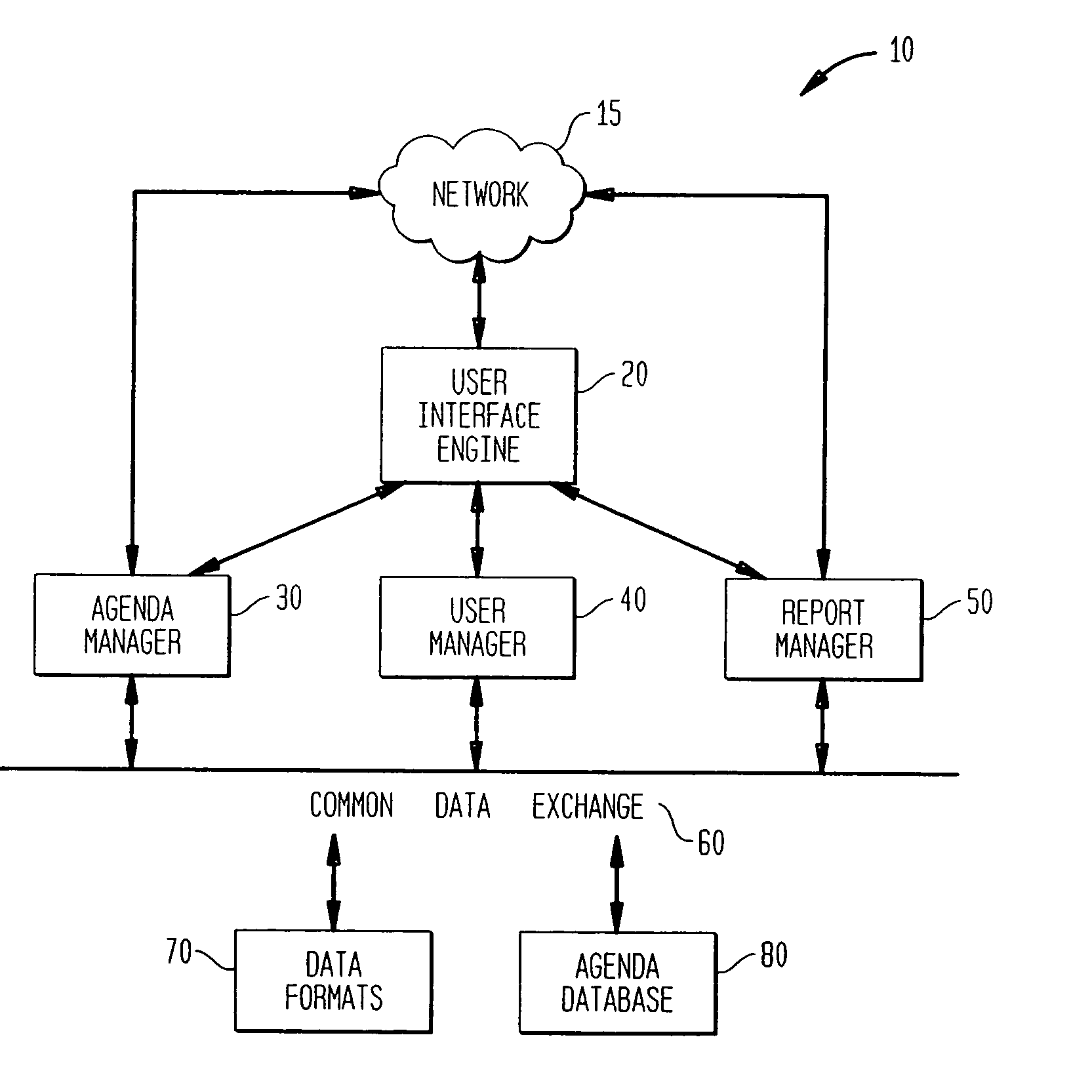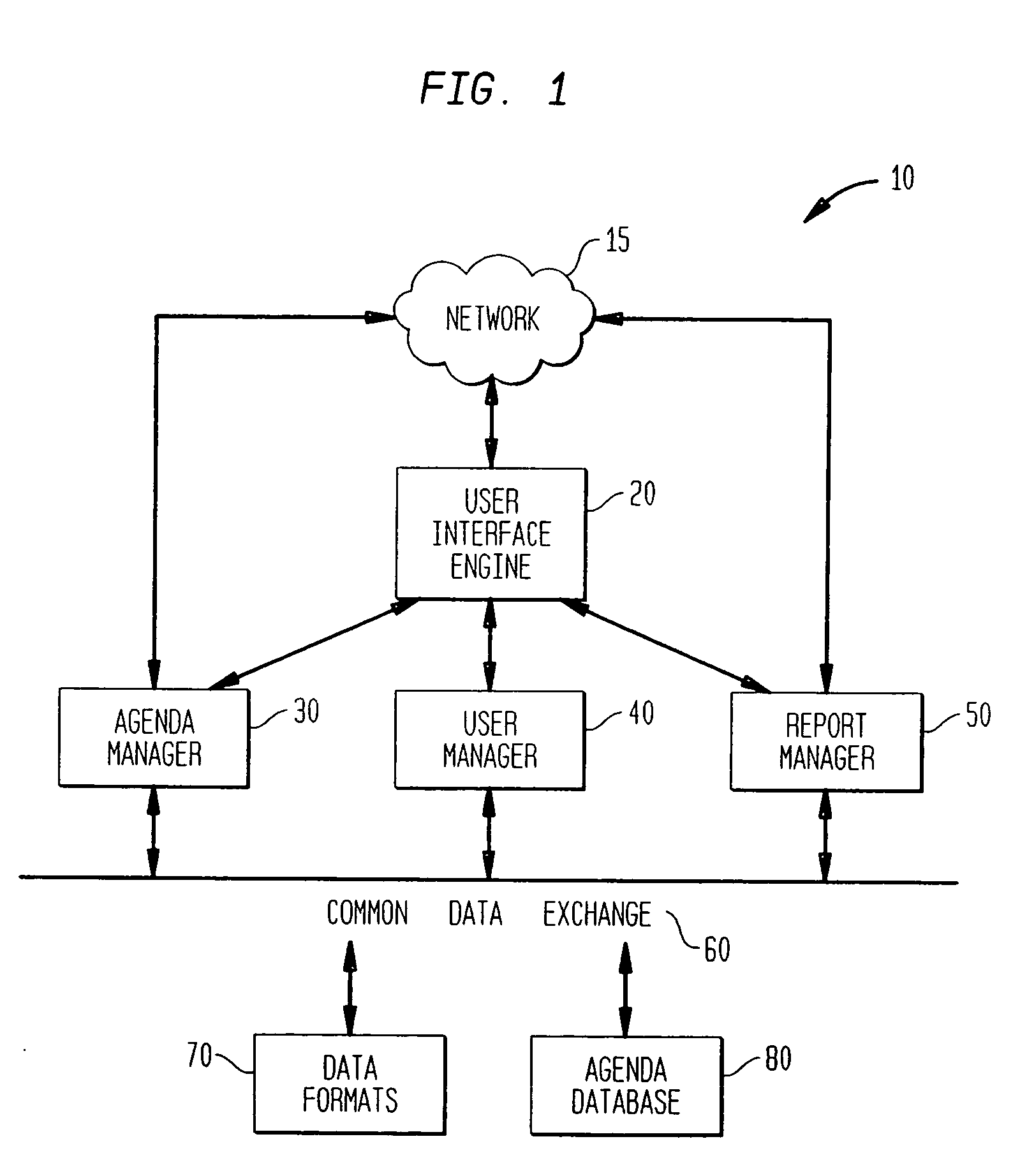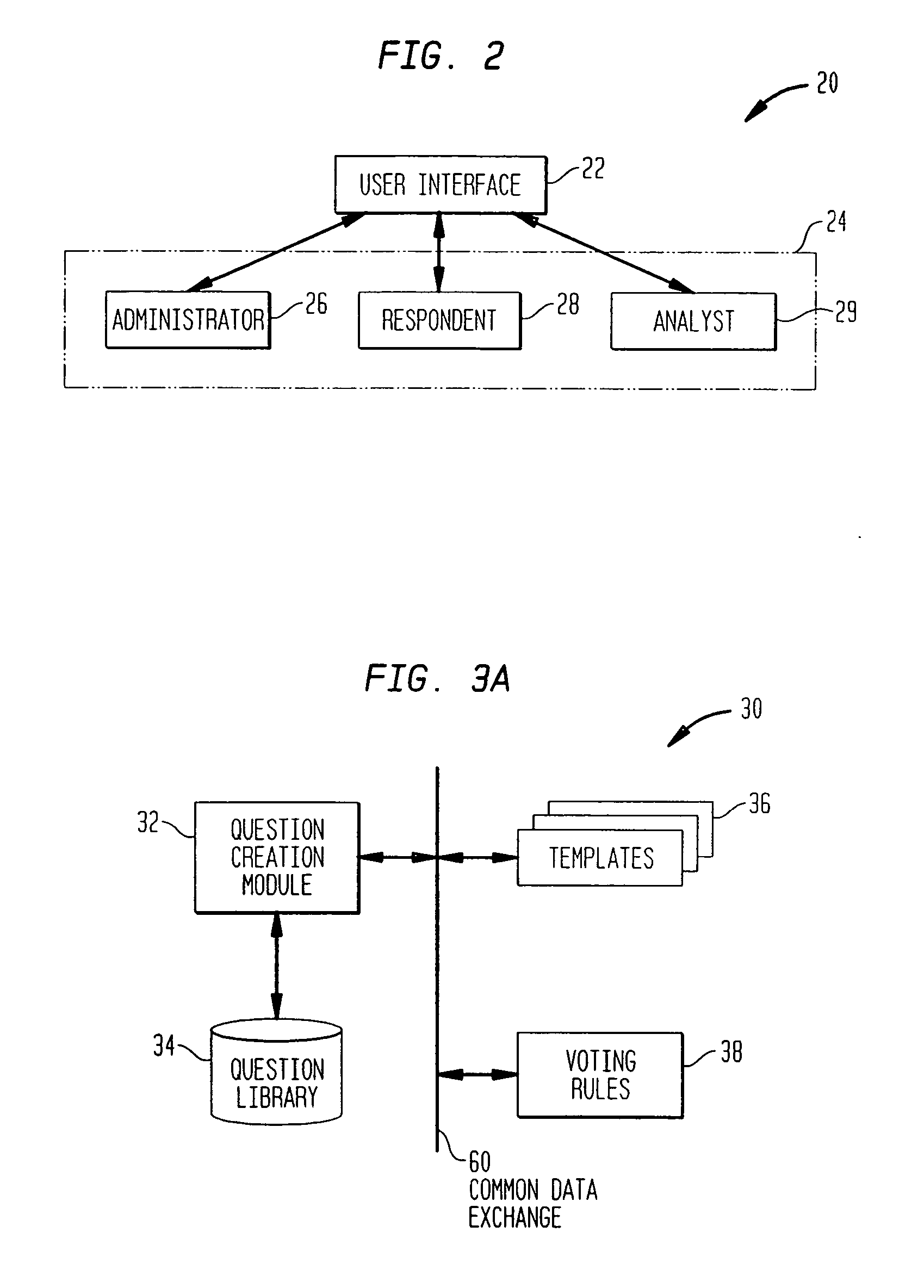System and method for overcoming decision making and communications errors to produce expedited and accurate group choices
a technology of communication error and group decision, applied in the field of individual choice processing, can solve the problems of limiting the reliability and accuracy of group decision, software systems used in such applications are not designed to withstand communication errors, and cannot enable a group,
- Summary
- Abstract
- Description
- Claims
- Application Information
AI Technical Summary
Benefits of technology
Problems solved by technology
Method used
Image
Examples
example 1
[0169] In the first Example, a port security situation, such a physical and cyber attack on New York Harbor, has targeted the George Washington Bridge (GWB), Lincoln Tunnel (LT), Holland Tunnel (HT), and Verrazano Bridge (VB). Emergency response teams (ERT's), coordinated by Port Security Headquarters in Hoboken (Portsec HQ), have been dispatched to each targeted area in accord with state and national contingency plans developed under the auspices of the Port Authority of New York and New Jersey (PANYNJ). Under this plan, each ERT contains mobile air and water forces, health management teams, and three Nuclear, Biological, Chemical (NBC) units equipped to detect and manage terrorist attacks
[0170] The plan includes a contingency option that allows reallocation of two NBC units from one or more of these locations to another. This contingency allows flexibility in the management of crises to make adjustments in the distribution of NBC units across the ERT's. An ERT can initiate a requ...
example 2
[0198] The second example illustrates the application of the present invention to a competence decision task. Consider the following emergency scenario. Five observers, John, Mary, Steve, Debby, and Ed are asked to observe a convoy of vehicles passing from point A to point B. Each observer is to report the number of vehicles to a local commander, who will then use the information to determine if resources are adequate to attack the convoy and dominate to achieve victory. If the convoy's attributes make it risky to conduct an attack, the commander can avoid error (and loss of life and resources) and regroup to plan another attack.
[0199] For simplicity, suppose the commander has informed the observers that unconfirmed reports suggest that the convoy includes up to 7 vehicles. The commander knows—but does not tell his observers—that 5 or more vehicles—depending on their type—would make an attack unfeasible.
[0200] A conventional decision support approach might ask each observer to rep...
example 3
[0225] In this example, the present invention is used to decipher intelligence for investment decisions and to produce investment decisions themselves. In these tasks, error is not defined as a constraint, although it could be if wireless transactions were sufficiently trustworthy. However time is still a significant constraint because speed in making decisions can provide a competitive advantage in creating and exploiting opportunities. Moreover, since there is always the possibility of system or human error, reaching a consensus as quickly as possible is essential for efficiency and effectiveness.
[0226] In practice, financial decisions are not made collectively in the sense that assessments of intelligence and investment options are done by collecting votes from individual investors to produce a collective outcome. Relying on collective outcomes for intelligence assessments and investment decisions is considered to be too risky because the errors are too costly. Allowing diversit...
PUM
 Login to View More
Login to View More Abstract
Description
Claims
Application Information
 Login to View More
Login to View More - R&D
- Intellectual Property
- Life Sciences
- Materials
- Tech Scout
- Unparalleled Data Quality
- Higher Quality Content
- 60% Fewer Hallucinations
Browse by: Latest US Patents, China's latest patents, Technical Efficacy Thesaurus, Application Domain, Technology Topic, Popular Technical Reports.
© 2025 PatSnap. All rights reserved.Legal|Privacy policy|Modern Slavery Act Transparency Statement|Sitemap|About US| Contact US: help@patsnap.com



